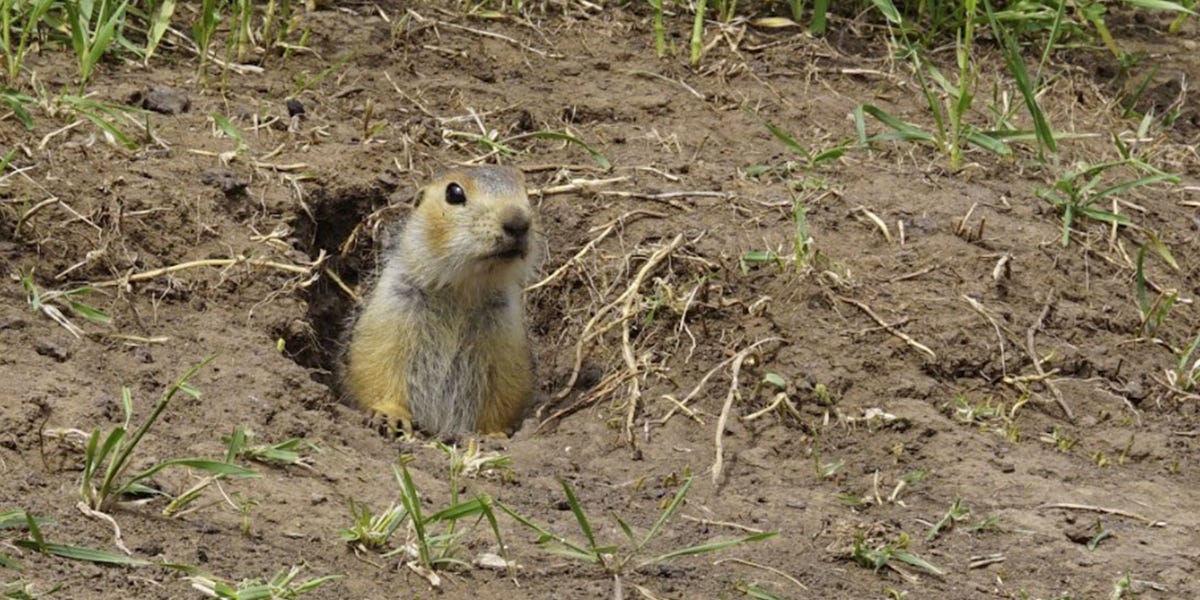Quit Gophers in Their Tracks: Comprehensive Control Methods
Quit Gophers in Their Tracks: Comprehensive Control Methods
Blog Article
Ultimate Pest Control Solutions for Taking On Persistent Gopher Problem Issues
In the world of insect control, gophers provide a distinct challenge due to their relentless nature and devastating behaviors. Gardeners and homeowners often find themselves secured a battle of wits with these underground parasites, seeking efficient options to reclaim their exterior areas. While the quest for gopher control may appear complicated, there exist targeted approaches and devices that can turn the trend for those seeking reprieve from these tunneling nuisances. By checking out a detailed method that includes understanding gopher habits, employing specialized trapping methods, taking advantage of repellents, and adopting long-lasting prevention tactics, a path towards efficient gopher monitoring emerges. The journey towards accomplishing assurance when faced with gopher invasions starts with a calculated and enlightened approach.
Understanding Gopher Behavior Patterns
Analyzing gopher habits patterns offers important understandings into their routines and choices, aiding in the growth of reliable pest control approaches. Recognizing how gophers behave is important in developing effective pest monitoring strategies.
Gophers are tunneling rats recognized for their comprehensive tunneling tasks. gopher lawn damage. By observing their habits, scientists have found that gophers are territorial animals, with each gopher commonly inhabiting its very own tunnel system. These tunnel systems offer numerous functions, including nesting, food storage, and security from predators
Additionally, gophers exhibit details feeding patterns, preferring origins, bulbs, and various other below ground plant parts. By understanding their dietary choices, parasite control specialists can tactically lure catches or apply repellents that target these food sources, efficiently lowering gopher populations.
Additionally, gophers are most active throughout specific times of the day, usually morning and late mid-day. This understanding can help in scheduling parasite control activities for maximum performance. Generally, a detailed understanding of gopher habits patterns is vital for carrying out targeted and effective insect control actions.
Efficient Trapping Methods
Comprehending the most reliable trapping strategies is vital for effectively taking care of gopher problems and lessening damages to property. When managing gophers, traps are a humane and efficient technique for control. One of one of the most generally utilized catches is the box catch, which captures gophers to life so they can be launched somewhere else. Positioning traps in energetic passages is vital for success. Identify active passages by weighing down the ground; those fixed over night are active. Establishing catches at tunnel entryways or generally tunnel itself increases the possibility of capturing gophers. It is essential to inspect catches regularly to ensure trapped gophers do not suffer and to eliminate recorded gophers immediately. Furthermore, appropriately keeping traps by cleansing and resetting them boosts their efficiency. When utilizing traps, perseverance is key as it may take a while to capture all the gophers. By employing these reliable trapping techniques, building owners can efficiently handle gopher problems and safeguard their landscapes.
Utilizing Repellents and Deterrents
To enhance the efficacy of capturing methods in taking care of gopher invasions, home proprietors can check out the use of repellents and deterrents as additional tools in their parasite control toolbox. Repellents work by giving off odors or preferences that gophers locate undesirable, driving them far from dealt with locations. Typical repellents consist of castor oil-based products, predator urine, and garlic-based sprays. These repellents develop an obstacle that inhibits gophers from getting in yards or digging up yards. Deterrents, on the other hand, aim to make the environment less attractive to gophers by using resonances or seem to imitate predators or produce disturbances that make the location inhospitable for gophers. Solar-powered devices that send out sonic pulses or shaking stakes can aid discourage gophers from settling in specific locations. When including repellents and deterrents into a parasite control approach, it is vital to comply with application directions carefully and on a regular basis reapply the items to maintain their effectiveness in preventing gophers from creating damages to residential properties.
Implementing Natural Control Techniques

Gopher traps can be positioned tactically in energetic passages to record and eliminate the parasites. These traps are a gentle method to manage gopher populations without resorting to poisonous substance or harmful chemicals. By incorporating these natural control techniques, it is feasible to efficiently handle persistent gopher invasions in a green way.
Incorporating Long-Term Avoidance Methods
To establish lasting control over gopher problems, it is vital to include proactive procedures that focus on stopping future events. Executing lasting avoidance techniques can substantially decrease the probability of gopher re-infestations. One reliable strategy is to install underground barriers constructed from wire mesh or hardware cloth around prone locations like yards or lawns. These barriers work as a physical deterrent, preventing gophers from tunneling right into these areas. Furthermore, on a regular basis checking and repairing any type of existing barriers can assist maintain their effectiveness in time.
One more important aspect of long-term avoidance is preserving a well-kept yard or backyard. Gophers are drawn in to areas with abundant food sources like roots, plants, and bulbs. By maintaining vegetation well-trimmed and getting rid this of excess debris, you can make your building much less enticing to gophers. Practicing correct waste monitoring by disposing of organic materials immediately can assist hinder these bugs from taking up house on your land. By integrating these aggressive actions right into your bug control technique, you can produce an aggressive environment for gophers, ultimately lowering the possibility of future invasions.

Conclusion
To conclude, dealing with gopher problems needs an extensive technique that incorporates trapping strategies, repellents, natural control approaches, and long-term prevention more helpful hints methods. By recognizing gopher actions patterns and utilizing a mix of these remedies, property owners can successfully take care of persistent infestations and avoid future incidents. It is essential to continually monitor and maintain these parasite control actions to make sure a gopher-free atmosphere.
By exploring an extensive method that includes understanding gopher actions, using specialized capturing methods, using repellents, and embracing long-term avoidance strategies, a path in the direction of effective gopher management arises. By observing their behavior, researchers have uncovered that gophers are territorial creatures, with each gopher commonly populating its own tunnel system. It's crucial to check catches often to make sure trapped gophers do not experience and to eliminate recorded gophers without delay. Deterrents, on the other hand, purpose to make the atmosphere much less appealing to gophers by making use of resonances or seem to simulate predators or produce disturbances that make the location inhospitable for gophers. Furthermore, growing specific plant life that gophers dislike, such as castor bean plants or gopher spurge, can act next as a deterrent.
Report this page